MaryAnn Bernal's Blog, page 305
March 14, 2014
History Trivia - Equirria takes place in Campus Martius
March 14
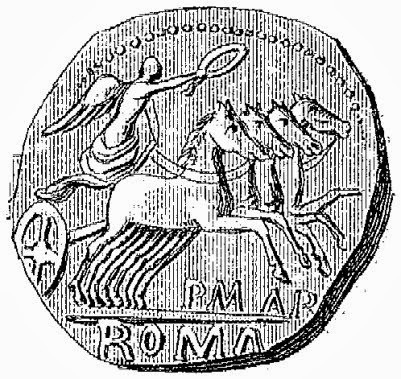
On this day the Equirria took place, which consisted of horse-racing in Campus Martius ("Field of Mars", Italian Campo Marzio; which was a publicly owned area of ancient Rome, about 490 acres)
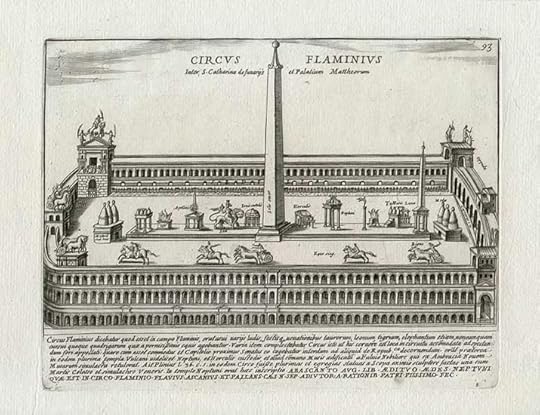
221 BC, the Circus Flaminius was built on the southern side of the Campus Martius, near the Tiber. This large track for chariot racing was named after Gaius Flaminius Nepos, who also constructed the Via Flaminia.
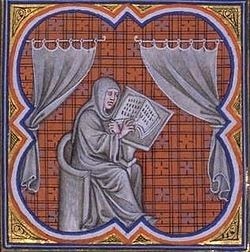
840 Einhard, historian and court scholar, and a friend of Charlemagne as well as his biographer, died.

1471 Sir Thomas Malory died. It is believed that Thomas Malory of Newbold Revell, Warwickshire, is the "Syr Thomas Maleore knyght" mentioned in the colophon to Le Morte Darthur, although there is no certain proof.


On this day the Equirria took place, which consisted of horse-racing in Campus Martius ("Field of Mars", Italian Campo Marzio; which was a publicly owned area of ancient Rome, about 490 acres)

221 BC, the Circus Flaminius was built on the southern side of the Campus Martius, near the Tiber. This large track for chariot racing was named after Gaius Flaminius Nepos, who also constructed the Via Flaminia.

840 Einhard, historian and court scholar, and a friend of Charlemagne as well as his biographer, died.

1471 Sir Thomas Malory died. It is believed that Thomas Malory of Newbold Revell, Warwickshire, is the "Syr Thomas Maleore knyght" mentioned in the colophon to Le Morte Darthur, although there is no certain proof.

Published on March 14, 2014 04:55
March 13, 2014
We Are Strong, But We Are Fragile by Bob Mustin available now on Amazon, Kobo and Nook
 2090 A.D. — The America nation has collapsed, and its remnants have been at war for a half-century.
2090 A.D. — The America nation has collapsed, and its remnants have been at war for a half-century. Samuel II, mayor of Citadel, a Blue Ridge Mountain enclave, is determined to end the city’s wars with a devolved tribal society called Freedomland. He sends troubled but insightful city archivist Jakob History to a bartering meet-up, hoping an interview with tribal leader Abraham Trapper might help further peaceful relations. Instead, the encounter leads Jakob to reexamine America’s past. Soon, Jonathan, Jakob's mentor, exposes the archivist to a surprising link with Abraham, which seems to set Jakob at odds with Citadel. But when Samuel leads Jakob to a danger-filled glimpse of Abraham’s tribal life, the archivist’s preconceptions of both cultures comes crashing down. Finally, a last, fateful encounter between Jakob and Abraham lays bare human strengths and weaknesses that are at the basis of civilization itself.
Amazon
http://www.amazon.com/We-Are-Strong-But-Fragile-ebook/dp/B00IN8A5XS/ref=sr_1_1?ie=UTF8&qid=1394725475&sr=8-1&keywords=bob+mustin
Kobo
http://store.kobobooks.com/en-US/ebook/we-are-strong-but-we-are-fragile
Barnes and Noble
http://www.barnesandnoble.com/w/we-are-strong-but-we-are-fragile-bob-mustin/1118856299?ean=2940149448517
Visit Bob's Webpage:
http://bobmustin.com/we-are-strong-but-we-are-fragile.html

Published on March 13, 2014 13:02
The Phil Naessens Show: The Chicago Cubs Amazing Youth Movement
http://phillipnaessens.wordpress.com/2014/03/12/the-phil-naessens-show-the-chicago-cubs-amazing-youth-movement/
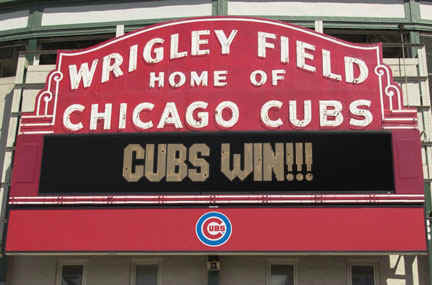
On this edition of the Phil Naessens Show Alex Hall joins Phil to answer a listeners question about Spring Training stats, Michael Taylor, Josh Donaldson and much more Oakland Athletics news. Rush Olson joins Phil to discuss the Chicago Cubs potential starting lineup, their pitching staff and the incredible talent they have in their minor league system. Mark Berman joins Phil to discuss whether Matt Harvey should pitch in 2014, Lucas Duda, Ike Davis, David Wright, Jacob deGrom, Noah Syndergaard and much more New York Mets news.

On this edition of the Phil Naessens Show Alex Hall joins Phil to answer a listeners question about Spring Training stats, Michael Taylor, Josh Donaldson and much more Oakland Athletics news. Rush Olson joins Phil to discuss the Chicago Cubs potential starting lineup, their pitching staff and the incredible talent they have in their minor league system. Mark Berman joins Phil to discuss whether Matt Harvey should pitch in 2014, Lucas Duda, Ike Davis, David Wright, Jacob deGrom, Noah Syndergaard and much more New York Mets news.

Published on March 13, 2014 09:38
This Run~ Walk ~ Move it or Shake it is for all of our HEROS who are in need of supplies and support !!!
 Wounded Warriors ~~ BADAZZ RUNNERS EVENTMay 31 at Anyplace
Wounded Warriors ~~ BADAZZ RUNNERS EVENTMay 31 at Anyplace This Run~ Walk ~ Move it or Shake it is for all of our HEROS who are in need of supplies and support !!!
This Run~ Walk ~ Move it or Shake it is for all of our HEROS who are in need of supplies and support !!!This race is only $20 an 50% of the cost of the RACE will go directly towards this cause. We want to truly #payitforward to our HEROS who keep us safe and fight for our Freedom. This is such an important cause.
This race will come with the beautiful Medal and a FREE Running Bib :)...
http://mypowertoovercome-com.myshopify.com/products/wounded-warriors-project
Please join us and make this a successful event ! Share, Share, Share !!!! https://www.facebook.com/events/596082420477742/


Published on March 13, 2014 07:18
German archaeologist suggests British Museum's Warren Cup could be forgery
Roman silver drinking vessel which cost the museum £1.8m could be 20th century creation, professor claims during debate
Dalya Alberge
The Guardian,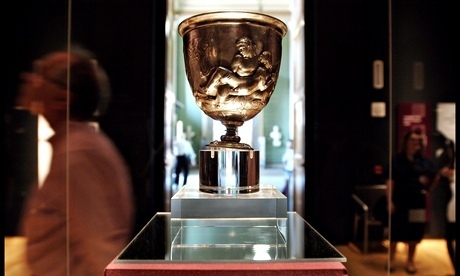 The British Museum says the Warren Cup dates from the 1st century AD. Photograph: Martin Godwin for the GuardianA Roman silver drinking vessel that depicts two sets of male lovers is one of the most prized jewels in the British Museum, singled out by director Neil MacGregor for his critically acclaimed History of the World in 100 Objects.
The British Museum says the Warren Cup dates from the 1st century AD. Photograph: Martin Godwin for the GuardianA Roman silver drinking vessel that depicts two sets of male lovers is one of the most prized jewels in the British Museum, singled out by director Neil MacGregor for his critically acclaimed History of the World in 100 Objects.
But on Wednesday, 15 years after the British Museum bought the Warren Cup for £1.8m, a highly respected German archaeologist suggested it could be a forgery.
At a public debate staged by King's College London, Prof Luca Giuliani challenged the museum's view that it dates from the 1st century AD.
The professor of classical archaeology at Humboldt University in Berlin dismissed it as a creation of the early 20th century, arguing that such explicit imagery is unprecedented in Roman silverware. He suggested instead that the cup was designed for the pleasure of its former owner – a wealthy American gay man, Edward Perry Warren, who bought it in Rome in 1911, and who also acquired other "counterfeit" pieces, he said.
At the debate, which was sponsored by the King's classics department and institute of classical studies, the British Museum's position was defended by Prof Dyfri Williams, author of The Warren Cup, published by the British Museum Press in 2006.
After Warren's death in 1928, the cup remained in private hands, too explicit to be shown in public for tastes at that time. It features male lovers in various poses. One pair shows the erastes – an older, active lover – who is bearded and wears a wreath, and the eromenos – the younger "beloved" – who is a beardless youth. Another scene features a beardless erastes and an eromenos who is just a boy.
Giuliani's doubts were aired in Germany last year, but Wednesday marked the first time he has addressed a British audience on the subject.
He acknowledges the high skill, but much of his doubt were based the fact the iconography suited Warren's specific taste – and the fact that this is supposedly a unique Roman item: "There is no other Roman silver tableware with a comparable subject matter. Silver vessels have a completely different iconography. Sexual escapades have no place here." Parallels are only found in lesser material – pottery – he argued.
Speaking to the Guardian just before the event, he said such highly explicit imagery is completely unknown from the Roman world: "You never find any such example." But it is comparable to pornographic imagery available in the 1900s, he said.
Williams paid tribute to his adversary, describing him as "a very intelligent, highly respected scholar, very important person in German scholarship". He told the Guardian: "I wouldn't want to attack him on a personal level at all."
But he disagrees with his theories. The fact that Warren bought other fakes is irrelevant, he said. He also dismissed the uniqueness of the iconography as not being proof: "We're really only reacting to each piece when it's found. We may find something spectacular next week."
He added: "The real issue, which he has not addressed, is the object itself … If the cup was made around 1900, as he claims, they would be using virtually pure silver. They have been refining silver since the middle of the 19th century."
Giuliani said at the beginning of the lecture on Wednesday night that his thinking was "an experimental line of thought". He also made reference to the fact that the cup could be deemed genuine if it showed signs of ancient corrosion on the inner side of the cup.
Williams was able to confirm that it did indeed show signs of corrosion and showed an image to prove this, leading Giuliani to say if that was so, then he would need to change his mind.
• This story was updated after the event on Wednesday night to reflect the discussion at the debate and Giuliani's recognition that the cup showed signs of ancient corrosion.
http://www.theguardian.com/science/2014/mar/12/british-museum-warren-cup-forgery
Dalya Alberge
The Guardian,
 The British Museum says the Warren Cup dates from the 1st century AD. Photograph: Martin Godwin for the GuardianA Roman silver drinking vessel that depicts two sets of male lovers is one of the most prized jewels in the British Museum, singled out by director Neil MacGregor for his critically acclaimed History of the World in 100 Objects.
The British Museum says the Warren Cup dates from the 1st century AD. Photograph: Martin Godwin for the GuardianA Roman silver drinking vessel that depicts two sets of male lovers is one of the most prized jewels in the British Museum, singled out by director Neil MacGregor for his critically acclaimed History of the World in 100 Objects.But on Wednesday, 15 years after the British Museum bought the Warren Cup for £1.8m, a highly respected German archaeologist suggested it could be a forgery.
At a public debate staged by King's College London, Prof Luca Giuliani challenged the museum's view that it dates from the 1st century AD.
The professor of classical archaeology at Humboldt University in Berlin dismissed it as a creation of the early 20th century, arguing that such explicit imagery is unprecedented in Roman silverware. He suggested instead that the cup was designed for the pleasure of its former owner – a wealthy American gay man, Edward Perry Warren, who bought it in Rome in 1911, and who also acquired other "counterfeit" pieces, he said.
At the debate, which was sponsored by the King's classics department and institute of classical studies, the British Museum's position was defended by Prof Dyfri Williams, author of The Warren Cup, published by the British Museum Press in 2006.
After Warren's death in 1928, the cup remained in private hands, too explicit to be shown in public for tastes at that time. It features male lovers in various poses. One pair shows the erastes – an older, active lover – who is bearded and wears a wreath, and the eromenos – the younger "beloved" – who is a beardless youth. Another scene features a beardless erastes and an eromenos who is just a boy.
Giuliani's doubts were aired in Germany last year, but Wednesday marked the first time he has addressed a British audience on the subject.
He acknowledges the high skill, but much of his doubt were based the fact the iconography suited Warren's specific taste – and the fact that this is supposedly a unique Roman item: "There is no other Roman silver tableware with a comparable subject matter. Silver vessels have a completely different iconography. Sexual escapades have no place here." Parallels are only found in lesser material – pottery – he argued.
Speaking to the Guardian just before the event, he said such highly explicit imagery is completely unknown from the Roman world: "You never find any such example." But it is comparable to pornographic imagery available in the 1900s, he said.
Williams paid tribute to his adversary, describing him as "a very intelligent, highly respected scholar, very important person in German scholarship". He told the Guardian: "I wouldn't want to attack him on a personal level at all."
But he disagrees with his theories. The fact that Warren bought other fakes is irrelevant, he said. He also dismissed the uniqueness of the iconography as not being proof: "We're really only reacting to each piece when it's found. We may find something spectacular next week."
He added: "The real issue, which he has not addressed, is the object itself … If the cup was made around 1900, as he claims, they would be using virtually pure silver. They have been refining silver since the middle of the 19th century."
Giuliani said at the beginning of the lecture on Wednesday night that his thinking was "an experimental line of thought". He also made reference to the fact that the cup could be deemed genuine if it showed signs of ancient corrosion on the inner side of the cup.
Williams was able to confirm that it did indeed show signs of corrosion and showed an image to prove this, leading Giuliani to say if that was so, then he would need to change his mind.
• This story was updated after the event on Wednesday night to reflect the discussion at the debate and Giuliani's recognition that the cup showed signs of ancient corrosion.
http://www.theguardian.com/science/2014/mar/12/british-museum-warren-cup-forgery

Published on March 13, 2014 06:48
Nine unopened Dead Sea Scrolls found
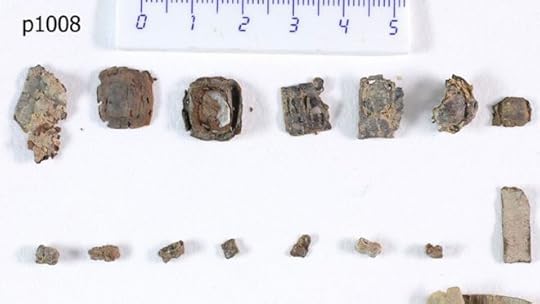 Seven of the recently rediscovered unopened phylactery scrolls from Qumran. (Israel Antiquities Authority/Shai Halevi)
Seven of the recently rediscovered unopened phylactery scrolls from Qumran. (Israel Antiquities Authority/Shai Halevi) 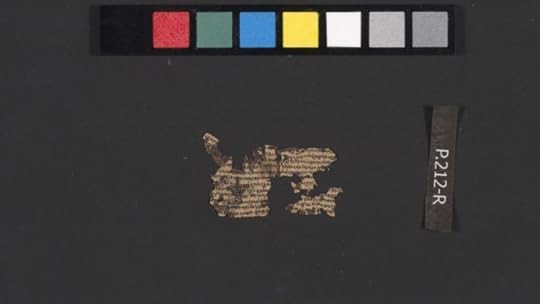 An unrolled phylactery scroll. (Israel Antiquities Authority/Shai Halevi) Next Slide Previous Slide Nine newfound penny-sized pieces of parchment belonging to the Dead Sea Scrolls laid unopened for nearly six decades before they were rediscovered in Israel.
An unrolled phylactery scroll. (Israel Antiquities Authority/Shai Halevi) Next Slide Previous Slide Nine newfound penny-sized pieces of parchment belonging to the Dead Sea Scrolls laid unopened for nearly six decades before they were rediscovered in Israel.The scrolls went unnoticed for years until one scholar came across them while searching through the Israel Antiquities Authority's (IAA) storerooms, the Times of Israel reported
"Either they didn’t realize that these were also scrolls, or they didn’t know how to open them," the IAA's head of artefact treatment and conservation Pnina Shor explained.
'Either they didn’t realize that these were also scrolls, or they didn’t know how to open them.'- Pnina Shor, head of artefact treatment and conservation for the IAAThe tiny scrolls were found inside three phylacteries, small leather boxes with Biblical versus written on them (called tefillin) that are worn by Jews during their morning prayers. Their discoverer, Yonatan Adler, had the boxes scanned by CT at a hospital in Israel in hopes there would be parchment inside.
He was right.
Once unopened, the scrolls are expected to shed new light on the religious practices of the Jewish people during the Second Temple Period between the years of 530 BC and 70, an era named for a holy place of worship for the Jewish people that was constructed by the builder of ancient Jerusalem King Herod. The Dome of the Rock stands today where the Second Temple purportedly once stood.
At least two dozen phylactery scrolls were discovered in the 1940s and 50 along with the rest of the Dead Sea Scrolls in a limestone cave in the West Bank's Qumran in Israel.
"[I] found a number of fragments of tefillin cases from Qumran Cave 4, together with seven rolled-up [phylactery] slips," Adler told the Times of Israel
Until now, the scrolls remained bound inside the phylacteries for approximately 2,000 years.
The IAA has been tasked with the difficult job of unrolling the scrolls without damaging them.
“We’re going to do it slowly, but we’ll first consult with all of our experts about how to go about this,” said Schor, who would not reveal when the process would start. “We need to do a lot of research before we start doing this.”
Remains of more than 900 religious manuscripts were found in 11 caves near the Dead Sea in the 1940s and 50s in Qumran.
http://www.foxnews.com/science/2014/03/13/nine-unopened-dead-sea-scrolls-found/

Published on March 13, 2014 06:41
Howling for Flash Fiction Votes - Voting polls close Thursday at 5 PM Pacific time.
I have voted for my friend, Brenda Perlin. Please consider voting for the author of your choice.
http://www.indiesunlimited.com/2014/03/12/howling-for-flash-fiction-votes/
Howling for Flash Fiction VotesPosted on March 12, 2014 by Administrators
 Oh yes
Oh yes
, it’s Wednesday. That means it’s time to vote for your favorite flash fiction entry. We have quite a few to choose from in this week’s challenge. Which one will prevail? That’s up to you! Look them over and cast your vote.
Go ahead and check out this week’s entries here . Make your choice, then use those share buttons at the bottom of the post to spread the word.
Voting polls close Thursday at 5 PM Pacific time.
Which flash fiction entry was your favorite? http://www.indiesunlimited.com/2014/03/12/howling-for-flash-fiction-votes/
http://www.indiesunlimited.com/2014/03/12/howling-for-flash-fiction-votes/
Howling for Flash Fiction VotesPosted on March 12, 2014 by Administrators
 Oh yes
Oh yes, it’s Wednesday. That means it’s time to vote for your favorite flash fiction entry. We have quite a few to choose from in this week’s challenge. Which one will prevail? That’s up to you! Look them over and cast your vote.
Go ahead and check out this week’s entries here . Make your choice, then use those share buttons at the bottom of the post to spread the word.
Voting polls close Thursday at 5 PM Pacific time.
Which flash fiction entry was your favorite? http://www.indiesunlimited.com/2014/03/12/howling-for-flash-fiction-votes/

Published on March 13, 2014 05:16
March 12, 2014
History Trivia - British astronomer Frederick William Herschel discovers the planet Uranus
Follow my blog with Bloglovin
March 13

483 Felix III became pope. He repudiated the Henoticon, a deed of union originating with Patriarch Acacius of Constantinople and published by Emperor Zeno with the view of allaying the strife between the Miaphysite Christians and Chalcedonian Christians. This renunciation initiated the Acacian schism between the Eastern and Western Christian Churches that lasted thirty-five years.

607 12th recorded perihelion passage of Halley's Comet.
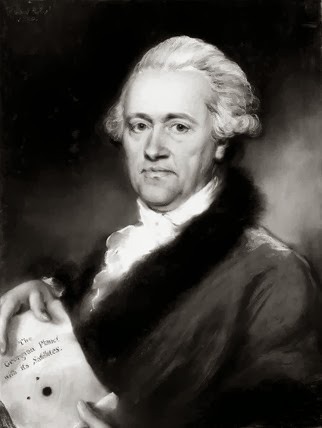
1781 British astronomer Frederick William Herschel discovers the planet Uranus
March 13

483 Felix III became pope. He repudiated the Henoticon, a deed of union originating with Patriarch Acacius of Constantinople and published by Emperor Zeno with the view of allaying the strife between the Miaphysite Christians and Chalcedonian Christians. This renunciation initiated the Acacian schism between the Eastern and Western Christian Churches that lasted thirty-five years.

607 12th recorded perihelion passage of Halley's Comet.

1781 British astronomer Frederick William Herschel discovers the planet Uranus
Published on March 12, 2014 13:58
Diane Turner - London Rocks - 12.03.2014
Published on March 12, 2014 13:18
Royal settlement linked to Sutton Hoo treasures
Finds from Rendlesham in Suffolk will go on display for the first time this week at the National Trust's Sutton Hoo visitor centre
Maev Kennedy
The Guardian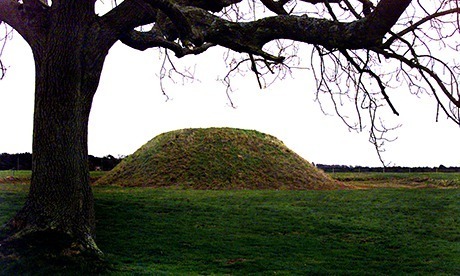 The burial mound at Sutton Hoo, one of Britain's most important archaeological sites, where Anglo-saxon treasures were found. Photograph: Garry Weaser/The GuardianThe home of the Anglo-Saxons who built the world famous burial mounds at Sutton Hoo in Suffolk, where a king was laid with golden treasure heaped around him, has been discovered on nearby farmland a few miles from the site.
The burial mound at Sutton Hoo, one of Britain's most important archaeological sites, where Anglo-saxon treasures were found. Photograph: Garry Weaser/The GuardianThe home of the Anglo-Saxons who built the world famous burial mounds at Sutton Hoo in Suffolk, where a king was laid with golden treasure heaped around him, has been discovered on nearby farmland a few miles from the site.
The finds from Rendlesham, which will go on display for the first time this week at the National Trust's Sutton Hoo visitor centre, include fragments of exquisite gold jewellery comparable in workmanship, if not in scale, to the Sutton Hoo treasures, pieces of gilt bronze horse harness, Saxon pennies and metal offcuts from a blacksmith's workshop.
The 50-hectare (123.5-acre) site, four miles north-east of Sutton Hoo, was discovered by archaeologists after a local landowner, Sir Michael Bunbury, became concerned about nighthawks – treasure-hunting thieves who use metal detectors. The archaeology unit of Suffolk county council has for five years been surveying his fields, using aerial photography, soil analysis, ground-penetrating radar and metal detecting, eventually pin pointing the 50 hectare Anglo Saxon site within 160 hectares of farmland.
The Venerable Bede, in his eighth-century history, wrote of a royal settlement but its location was unknown until now.
Professor Christopher Scull, of Cardiff and London universities, said the site was of international importance for understanding the Anglo-Saxon elite and their European trading connections. "The quality of some of the metalwork leaves no doubt that it was made for and used by the highest ranks of society."
The Sutton Hoo discovery was one of the greatest of the 20th century. The low mounds on a ridge overlooking the river Deben were well known, but archaeologists believed grave robbers had emptied them centuries ago, until an eccentric landowner, Edith Pretty, insisted that she had seen ghostly figures walking on them.
In 1939 a local archaeologist, Basil Brown, working with her gardener and gamekeeper, began to uncover the outline of a huge ship, the timbers rotted away but its shape perfectly preserved in the sandy soil. It was full of treasure, including solid gold buckles, jewelled and enamelled shoulder and belt clasps, and luxury imports from Rome, Byzantium and North Africa. One of its remaining mysteries
http://www.theguardian.com/science/2014/mar/10/royal-settlement-sutton-hoo-treasures
Maev Kennedy
The Guardian
 The burial mound at Sutton Hoo, one of Britain's most important archaeological sites, where Anglo-saxon treasures were found. Photograph: Garry Weaser/The GuardianThe home of the Anglo-Saxons who built the world famous burial mounds at Sutton Hoo in Suffolk, where a king was laid with golden treasure heaped around him, has been discovered on nearby farmland a few miles from the site.
The burial mound at Sutton Hoo, one of Britain's most important archaeological sites, where Anglo-saxon treasures were found. Photograph: Garry Weaser/The GuardianThe home of the Anglo-Saxons who built the world famous burial mounds at Sutton Hoo in Suffolk, where a king was laid with golden treasure heaped around him, has been discovered on nearby farmland a few miles from the site.The finds from Rendlesham, which will go on display for the first time this week at the National Trust's Sutton Hoo visitor centre, include fragments of exquisite gold jewellery comparable in workmanship, if not in scale, to the Sutton Hoo treasures, pieces of gilt bronze horse harness, Saxon pennies and metal offcuts from a blacksmith's workshop.
The 50-hectare (123.5-acre) site, four miles north-east of Sutton Hoo, was discovered by archaeologists after a local landowner, Sir Michael Bunbury, became concerned about nighthawks – treasure-hunting thieves who use metal detectors. The archaeology unit of Suffolk county council has for five years been surveying his fields, using aerial photography, soil analysis, ground-penetrating radar and metal detecting, eventually pin pointing the 50 hectare Anglo Saxon site within 160 hectares of farmland.
The Venerable Bede, in his eighth-century history, wrote of a royal settlement but its location was unknown until now.
Professor Christopher Scull, of Cardiff and London universities, said the site was of international importance for understanding the Anglo-Saxon elite and their European trading connections. "The quality of some of the metalwork leaves no doubt that it was made for and used by the highest ranks of society."
The Sutton Hoo discovery was one of the greatest of the 20th century. The low mounds on a ridge overlooking the river Deben were well known, but archaeologists believed grave robbers had emptied them centuries ago, until an eccentric landowner, Edith Pretty, insisted that she had seen ghostly figures walking on them.
In 1939 a local archaeologist, Basil Brown, working with her gardener and gamekeeper, began to uncover the outline of a huge ship, the timbers rotted away but its shape perfectly preserved in the sandy soil. It was full of treasure, including solid gold buckles, jewelled and enamelled shoulder and belt clasps, and luxury imports from Rome, Byzantium and North Africa. One of its remaining mysteries
http://www.theguardian.com/science/2014/mar/10/royal-settlement-sutton-hoo-treasures
Published on March 12, 2014 12:20




